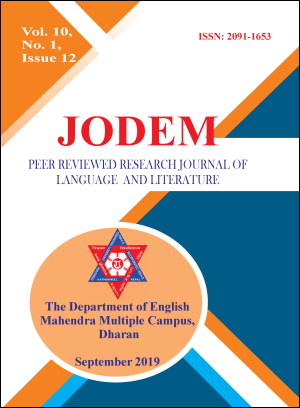Juxtaposing Sama’s Bhimsenko Antya with Shakespeare’s Richard II
DOI:
https://doi.org/10.3126/jodem.v11i1.34823Keywords:
Adaptation, appropriation, contextualisation, transpositionAbstract
The works of William Shakespeare (1564-1616) have occasioned such a history of being altered to fit new historical periods, new cultures and new media that they have dominated literary studies related to the term „adaptation‟. Adaptation of a main source into different trans-genres, such as graphic novels, movies, performances on different kinds of stages, and indeed translations, are the study area of Adaptation Theory. The goal of an adaptation is to transfer works from one culture and language to make them usable for another culture and society. This research paper offers a comparative approach to two different plays produced in two different cultures, which have to date been regarded as wholly independent. As I will show, of the two, the source play, or „hypo text‟, is William Shakespeare’s historical tragedy King Richard II (text „A‟), while I will juxtapose Balalkrishna Samas play Bhimsenko Antya [The Doom of Bhimsen as a hypertext (text „B‟), which I will analyse in the light of Adaptation Theory. The paper shows that the plots and characters of the two plays are closely interrelated. Fourteen major incidents correspond closely between the main source and the adapted version, along with broad similarities in settings, even where characterizations of the principal characters suggest a diverging relationship with the hypo text. Sama‟s The Doom of Bhimsen, in short, is an appropriation of Shakespeare’s King Richard II, newly contextualized to Nepalese history and culture while being produced as a completely new Nepalese product. As this aspect of Sama’s play has never previously been explored; this research paper brings a breakthrough in the study of Nepalese literary history, and at the same time, makes a fresh contribution widening the area of adaptation theory.
Downloads
Downloads
Published
How to Cite
Issue
Section
License
© Department of English, Mahendra Multiple Campus, Dharan, Nepal

